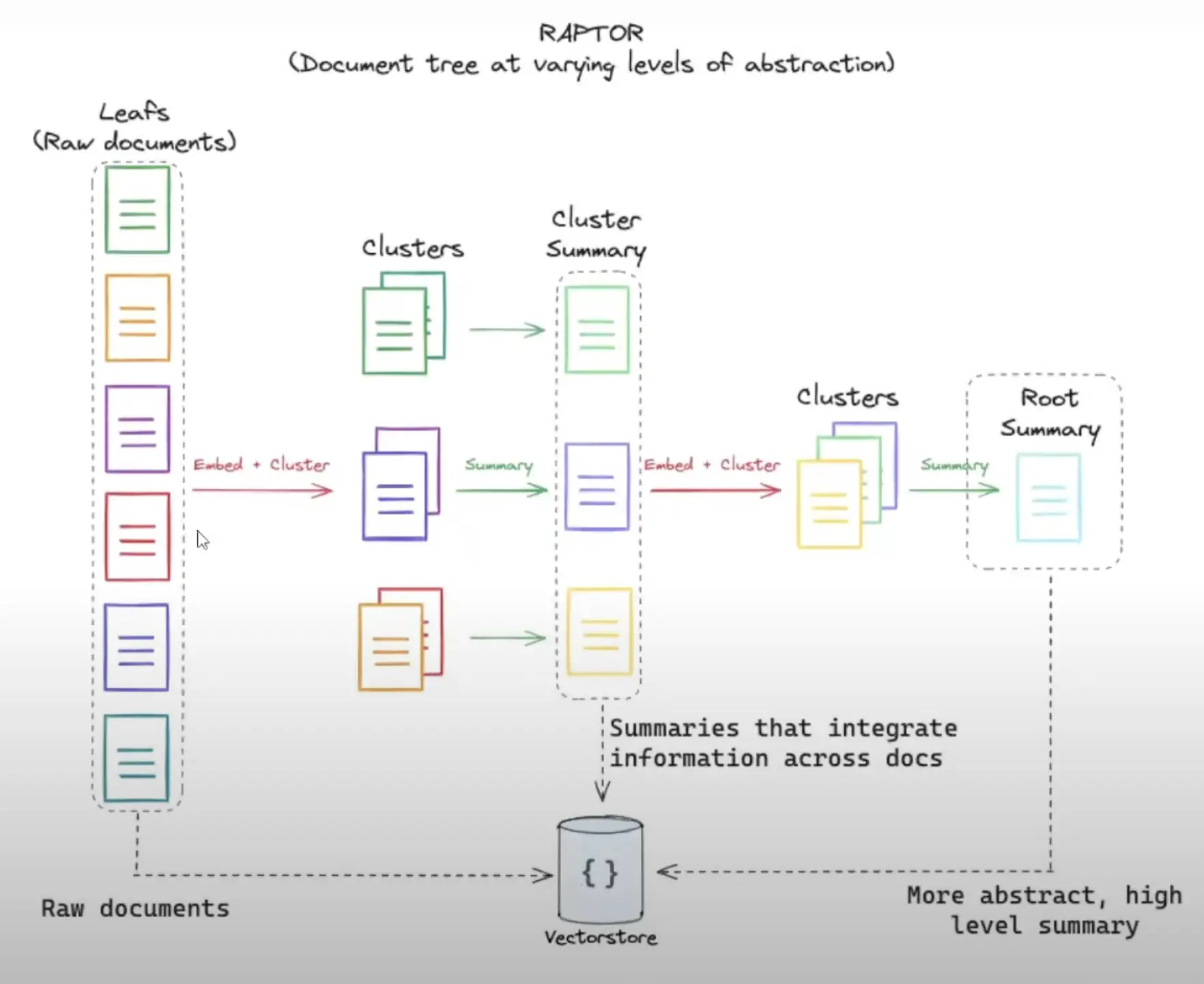RAPTOR: Tree-based Retrieval for Language Models
 Tom X Nguyen
Tom X Nguyen
What is it?
RAPTOR (Recursive Abstractive Processing for Tree-Organized Retrieval) is a new technique for improving retrieval-augmented language models, particularly for long documents: https://arxiv.org/html/2401.18059v1
Problems addressed
Most existing retrieval methods only retrieve short, contiguous text chunks, limiting their ability to represent large-scale discourse structure and answer thematic questions that require integrating knowledge from multiple parts of a text.
Approach
- Recursively embeds, clusters, and summarizes chunks of text
- Constructs a tree with different levels of summarization from bottom up
- At inference time, retrieves from this tree, integrating information across lengthy documents at different levels of abstraction
Process
The process begins by segmenting text into 100-token chunks and embedding them using SBERT. RAPTOR then employs Gaussian Mixture Models for clustering similar chunks, which are summarized using GPT-3.5-turbo. This process is repeated, building the tree from bottom up:
i. Segments text into 100-token chunks ii. Embeds chunks using SBERT iii. Clusters similar chunks iv. Summarizes clusters using GPT-3.5-turbo v. Repeats process, building tree from bottom up
Querying
- Collapsed tree method outperforms tree traversal
- Retrieves nodes across all layers based on relevance
- Uses cosine similarity for matching
Key features
- Builds hierarchical tree of text summaries
- Retrieves from multiple abstraction levels
- Uses clustering (GMMs) and summarization (LLMs)
- Offers flexible querying (tree traversal / collapsed tree)

Benefits:
- Outperforms traditional methods (e.g., BM25, DPR) on QA tasks
- Excels at complex queries needing multi-part info
- Scales linearly with document length
- Sets new SOTA on some benchmarks when paired with GPT-4
Evaluation was conducted on NarrativeQA, QASPER, and QuALITY datasets, using metrics such as BLEU, ROUGE, METEOR, F1 score, and Accuracy.
Subscribe to my newsletter
Read articles from Tom X Nguyen directly inside your inbox. Subscribe to the newsletter, and don't miss out.
Written by

Tom X Nguyen
Tom X Nguyen
Started out this path from working with MIPS assembly at around 12 years old, and for some reason ended working mostly on fullstack.